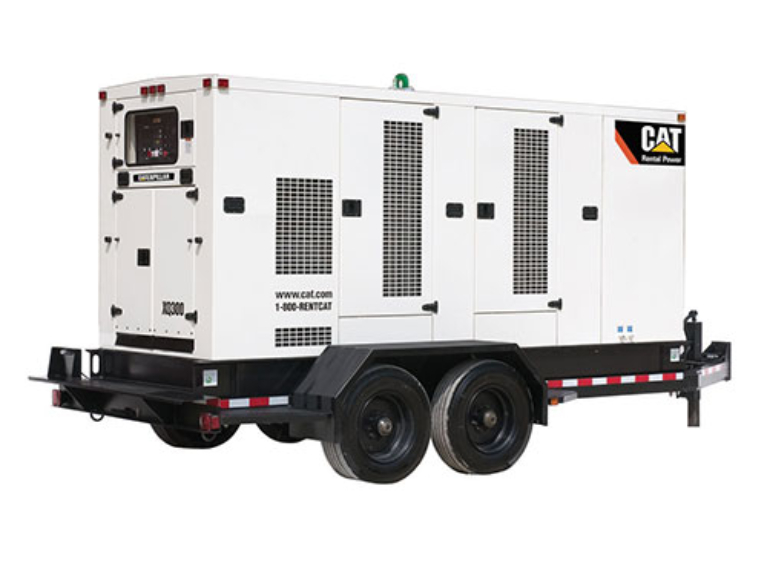Generators are extremely efficient and effective tools for alternate power supply. Several businesses and industrial units heavily rely on generators to supply power in case the power grid switches off or harsh weather conditions disrupt the power supply. As important as they are for your setup, they are expensive pieces of machinery and the cost of some of them can go up to thousands of dollars. Thus, losing a generator can be extremely inconvenient for you and your business. Not only would it amount to financial loss but it can also put your business on a temporary pause mode, resulting in a loss of business and production. This loss of power can be life-threatening too if such a situation arises in hospitals where several pieces of life-saving equipment run on electricity.
Therefore, you must ensure that your generators are safeguarded from theft and damage so that you can enjoy a continuous supply of power. Any untoward incident with your generator can cost you a lot – both in terms of direct financial loss as well as production, manufacturing, and business loss. Here are ten important steps you can implement to ensure that your generator unit is safe and functioning to the best of its capabilities.
Build a fence around your generator from day one
Not building a protective fence or enclosure is one of the most common mistakes that most people make, leaving the generator in an unsecured place and thinking that they will build the security enclosures the next day. This is a recipe for disaster. There have been many instances when people have woken up to see their generators gone the next morning. You must ensure that you build a fence or a safety enclosure before you buy one or on the same day. Fencing is one of the most effective security measures that you can deploy for safeguarding your generator. You can opt for the most basic ones that require nothing more than a solid fence around the generator.
However, to enhance security, you can use the more robust fencing options and also add sensors to them to get notifications and warning every time there is suspected movement around the generator. To further scale up the security, you can set up an alarm system as well. These systems come with CCTV cameras that will set the power outlet alarm off if there is unwanted light or movement around the enclosure.
See related: Understanding generator labels and data tags
Get rid of the wheels
Several generators come with wheels attached to them so that it is easy to move them around, especially the bigger ones. However, these very wheels can make it easy for thieves to take the generator away. You can, instead, place your generator on wooden blocks or other secured surfaces so that it is not easy to move around. The sheer inconvenience and the heaviness of the generator will deter thieves from stealing your generator. Additionally, you can also secure the generators with storage boxes to prevent theft. These are designed to fit specific generators and provide much-needed protection from vandalism and theft. You can also custom-make an enclosure or simply keep the generator in a locked garage for best-in-class safety.
Keep the area well-lit
Anything kept in the dark is prone to be stolen with absolute ease. The easiest way of stopping that from happening is to keep the area where you install your generator well-lit. You can also go for an alarm system with a combination of solid and motion-sensing lights to ensure that you set an alarm if there is any unwarranted movement around the generator. Keep the lights plugged into both grid and generator power so that they are on at all times to improve security.
Block access to the generator
Anything that is easily accessible is more prone to damage and theft. While you must build a fence around the generator, you must also make an arrangement that makes access to it more difficult. You can block its way by putting or installing other machines, or small structures around it so that the generator remains safe. However, you must ensure that the generator is provided with sufficient ventilation to avert the risk of carbon monoxide poisoning.
Protect and drain the fuel
Fuel is one of the most common reasons for theft and vandalism. There have been many instances where thieves have stolen the fuel from the storage as well as the generator’s gas tank, and left the generator damaged in the process. It is best to keep the fuel in a safe and secure place. Protection of your generator is not only about keeping it safe from theft and vandalism. It is also about keeping it safe from malfunctioning. And draining the fuel is one way of doing it. Chances are that you will not use your generator very often. In such a scenario, it is best to drain the fuel before letting it rest for an extended period of time. When refueling, make sure to add fuel stabilizer to the gasoline before adding it to the generator inside the tank. This will protect the fuel from going stale and clogging the filters.
See related: How do generator function?
Hang your generator
When not in use, hang your new generator with a crane or another viable option. The same procedure is followed at several construction sites where portable generators are hung with a crane when not in use. This is, by no means, an industry-specific trick or show-off. It is a way of safeguarding generators from theft and vandalism.
Safeguard the Generator with Carriage Bolts and Steel Plates
This is an especially useful tip for campers, who use portable generators. Use carriage bolts that are driven into a solid steel plate and secured into the generator. The steel plate you install must be kept at a distance of at least 2 feet from the point of contact with the generator. The extra space that this arrangement creates can be used to pack and store the car with its wheels resting on the steel plate. This will make things very difficult for a thief to access and steal the generator, as they’d literally need bolt cutters to accomplish the task
However, you must ensure that the exhaust pipes face away from the car so that there is no risk of carbon monoxide poisoning. You can also use GPS Tracker to track the vehicle and generator, if and when stolen.
Lock the generator
As a generator is an extremely important piece of machine you own for your industrial or residential setup, you must go the distance in safeguarding it. While it is advisable to set up a fence around it for the first round of safety, not using a lock and key can be disastrous. A simple lock and chain will not solve the purpose as thieves often have the basic tools to break them. Instead, go for hardened lock and chain options to enhance the safety of the generator. These locks and chains usually require a grinder to cut up and it is highly unlikely that a thief will roam around carrying a grinder to cut things up. Such hardened locks and chains will further enhance the safety of the generator.
Hang a warning sign
Hanging a warning sign will deliver some sense of caution to the thieves, stopping them to take unwarranted action. A warning sign will also help you identify your generator if in case it is taken away and found by the police. Alternatively, you can install a power outage alarm for further securing the operation of the machine. This alarm goes off any time there is a cut in the power supply. So, if a thief disconnects the power of the generator to take it away, the alarm will be triggered, cautioning you of possible theft.
Hire security
Hiring a professional security guard is the easiest and safest way of protecting your generator. This is especially a good idea for industrial setups where you are more likely to install expensive generators that require proper patrolling. When it comes to protecting your residential generators, then this option might not work, however, you can patrol the generators if you are out camping. You can take turns and ensure that it remains safe.
There is no doubt about the fact that generators are an important addition to your power needs. They are reliable and efficient alternatives to electricity when the power grid goes off or the power supply is disrupted due to harsh weather conditions. They are built to work even in the most challenging conditions, making them widely used alternate power sources. However, this also means that they are prone to theft and vandalism.
These expensive pieces of machinery can be easily destroyed or stolen if left without proper protection, something you must ensure. The steps mentioned above will keep your generator safe. While you don’t have to use all the steps that have been mentioned, the basic fencing and protective covering are a must from day one. So, make sure you install fencing around it the moment you bring your generator to your setup location and enjoy an all-time power supply. Moreover, make sure you always have the serial number of the generator, along with other documentation stored in a safe place, so that they can come in handy if your generator goes missing.
If you need any further assistance in protecting or storing your portable generator from theft, or simply want to know more about our collection of new and used generators, please feel free to get in touch with us!
Frequently Asked Questions About Portable Generator Safety
What is a safe distance for a generator?
Never run a generator in an enclosed space or indoors.
Always place the generator at least 20 feet from the house with the engine exhaust directed away from windows and doors.
How can we prevent theft of generators?
If you have your property secured in some way, such as fencing, then the security is even greater. If you don’t have a fence around your property, some individuals have had chain link fencing installed around their generators to protect them from any sort of vandalism.
Can you track a stolen generator?
Some generators get left on job sites and misplaced. GPS trackers can solve those issues with exact locations. Generator trackers also have geo-fence technology. This will set off the alarm system, send an alert via text or email if the generator leaves a predetermined area.









